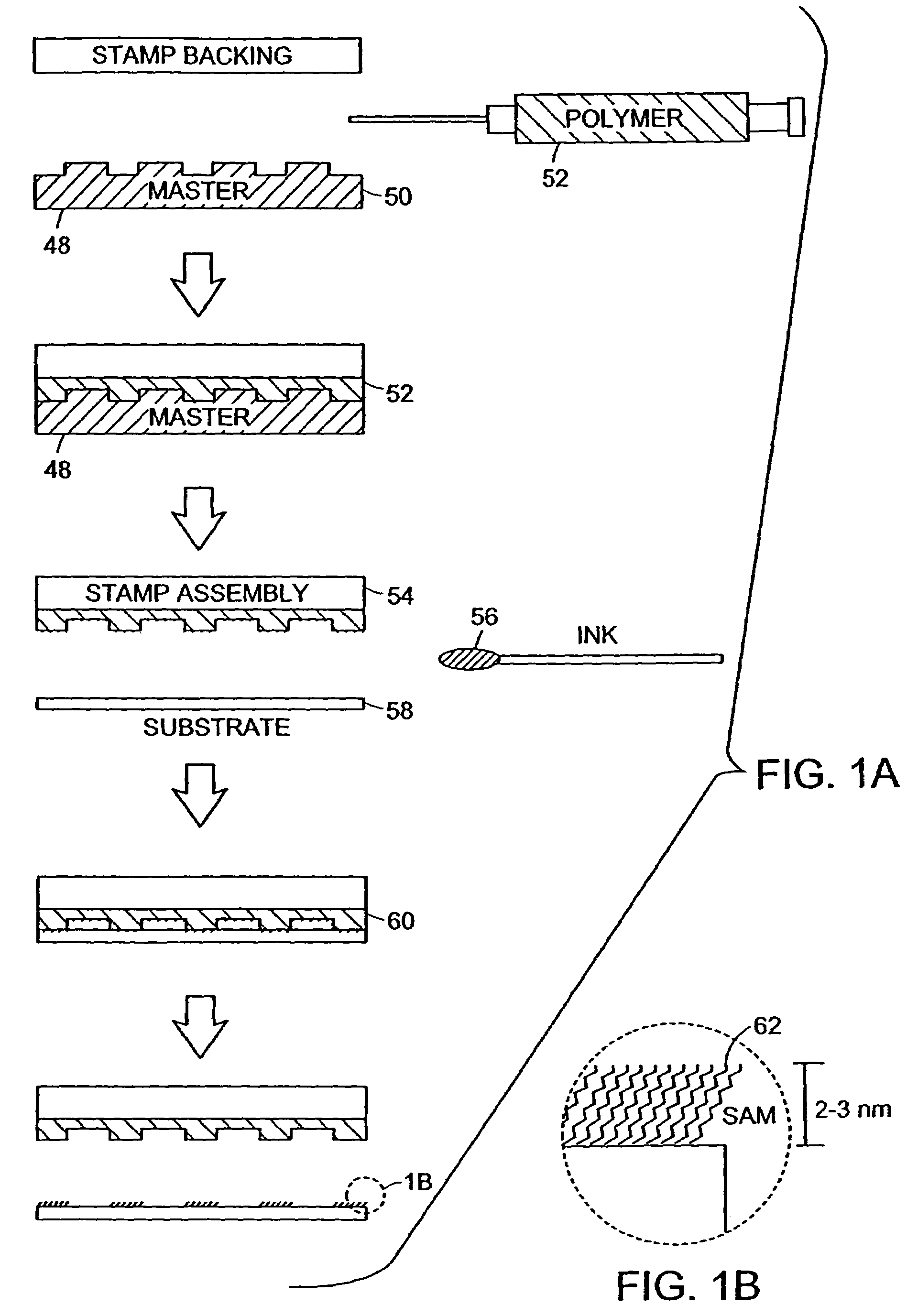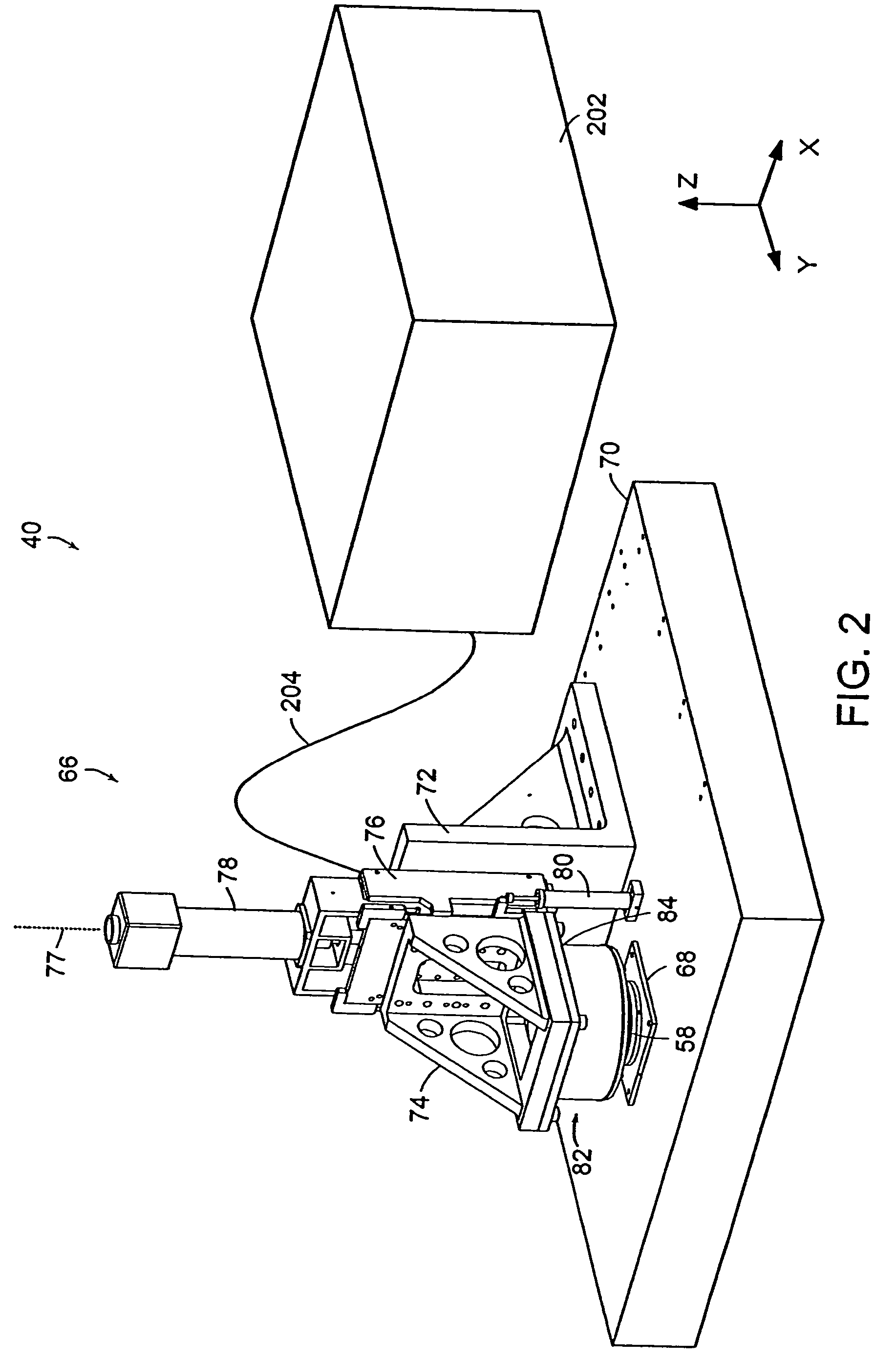Microcontact printing
a micro-contact printing and printing technology, applied in the field of micro-contact printing, can solve the problems of lack of accuracy and consistency in micro-contact printing, the user is difficult or impossible to consistently adjust the rate at which the air pressure drops within the variable-pressure chamber, and the above-described conventional micro-contact printing practices. achieve the effect of generating undesired patterning results
- Summary
- Abstract
- Description
- Claims
- Application Information
AI Technical Summary
Benefits of technology
Problems solved by technology
Method used
Image
Examples
Embodiment Construction
[0082]Referring to the drawings in detail, where like numerals indicate like elements, there is illustrated a microcontact printing tool in accordance with the present invention designated generally as 40.
[0083]Microfabrication has long been used for semiconductor applications. Recent developments in biology and chemistry are now employing microfabrication as well. While some of the procedures and techniques from the semiconductor industry can be carried over for use in these new applications, biologists and chemists often have specific requirements that cannot be met by conventional means.
[0084]Microcontact printing is a method of microfabrication that can satisfy many of these demands. As one of the suite of soft lithographic fabrication techniques, microcontact printing permits the patterning of microfeatures that can be tailored to have additional functionality for chemical or biological activity. This technology has the capability of overcoming several of the drawbacks of photo...
PUM
| Property | Measurement | Unit |
|---|---|---|
| diameter | aaaaa | aaaaa |
| sizes | aaaaa | aaaaa |
| sizes | aaaaa | aaaaa |
Abstract
Description
Claims
Application Information
 Login to View More
Login to View More - R&D
- Intellectual Property
- Life Sciences
- Materials
- Tech Scout
- Unparalleled Data Quality
- Higher Quality Content
- 60% Fewer Hallucinations
Browse by: Latest US Patents, China's latest patents, Technical Efficacy Thesaurus, Application Domain, Technology Topic, Popular Technical Reports.
© 2025 PatSnap. All rights reserved.Legal|Privacy policy|Modern Slavery Act Transparency Statement|Sitemap|About US| Contact US: help@patsnap.com



